Supplement Testing: Who is Watching Out for the Athletes?
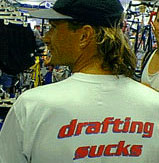
Most professional athletes wake up every day faced with a dilemma. They ask themselves “Will today be the day that I inadvertently consume a supplement that’s been tainted with a prohibited substance? Or should I go through my day working at a less-than-optimal level so I don’t risk a false positive drug test?” The mental games go on with “I’m being told that it’s my responsibility to watch what I eat and anything that is found in my urine or blood is my fault, but nobody is giving me the tools to help me determine if what I’m eating is safe. Will today be the day?” Thankfully, for the vast majority of athletes, this nightmare never becomes reality. But really: Who is watching out for athletes?
In parts 1 and 2 of this series, I discussed the US Food and Drug Administration (FDA) oversight of the nutritional supplement industry and possible sources of contamination of supplements as they are produced in contract labs under a variety of conditions (in the regulated world of cGMP and the free-for-all world of non-cGMP). While it is possible to test every ingredient used to produce a batch of a supplement, nothing can assuage the worry faced by every athlete like testing off-the-shelf supplements for prohibited substances. Part 3 of this series explores some of the options present today that revolve around supplement testing, and insight into where the future of testing lies.
What does testing a supplement involve?
Testing for WADA prohibited substances is not an easy task. The current WADA list contains an inexhaustive accounting of over 200 defined substances and wording that covers classes of drugs (such as steroids and beta blockers) or designer drugs that are modifications of existing prohibited substances or related substances. Most analytical testing is carried out by LCMS (Liquid Chromatography-Mass Spectrometry) and GCMS (Gas Chromatography-Mass Spectrometry) in specialized analytical labs. All analytical tests rely on comparison of the test sample against a library of known materials. The analytical techniques employed aid chemists to make this comparison, and will include both a characteristic retention time on a separation column as well as by molecular weight.
Further studies can include confirmation of a structure by the distinctive molecular splitting pattern when a molecule is bombarded by an inert gas within a mass spectrometer. If a particular material is detected, the chemist can then conduct a separate quantitative experiment that will help determine the amount of a material in a sample. Sample preparation is usually by liquid-liquid and solid phase extraction techniques (that assist with isolation and concentration of contaminants from the bulk material) and internal marker(s) are added to each sample to assess suitability of matrix for testing. The degree of recovery of these internal markers indicates the reliability of recovery of the contaminants in the sample. A Laboratory Information Management System (LIMS) is often used to record sample details and analysis. This archival system allows for traceability of results, prevents unauthorized modification of results once entered, and allows for easy comparison between sample results.
An oft-quoted study commissioned by the International Olympic Committee in 2001 analyzed 634 non-hormonal nutritional supplements bought from 215 different suppliers in 13 different countries and found that 14.8% tested positive for at least one anabolic agent. Many of those testing positive originated in the United States. Inadvertent contamination of supplements can, and does, occur. This leads us to the question:
Who can test?
The Laboratory Code of Ethics, in the International Standard for Laboratories (Section 4.4 of Annex B), states that WADA-accredited laboratories shall not engage in analyzing commercial material or preparations (e.g. dietary supplements) unless specifically requested by an Anti-Doping Organization as part of a doping case investigation. The Laboratory shall not provide results, documentation or advice that, in any way, suggests endorsement of products or services. What this means is that current WADA-accredited labs, such Don Catlin’s lab at UCLA, can no longer test commercial samples. This has opened up a dilemma in the private sector as testing labs have sprung up to fill the void. However, just like the supplements they test, these labs do not necessarily follow the same standards. Different accreditation agencies exist for analytical laboratories. Details on ISO17025, CAP, and CILA are discussed below.
A passing score for contamination testing is typically defined as being below the detection limit of the analytical method. This means that no measurable amount of a given substance is present in the sample. Detection limits are necessary in any such analytical method. Manufacturers and consumers alike should be wary of any analytical program that does not disclose the detection limits that it uses.
Summary of the leading USA-European testing programs

Informed-Choice: This is a partnership between supplement companies and HFL, a world-class anti-doping laboratory based in the UK, that allows athletes to make an informed choice about what they put into their bodies. The INFORMED-CHOICE organization was created in response to a recognized need to test nutritional supplements for inadvertent contamination with banned substances (against the World Anti-Doping Agency list) via a cost effective, reliable and high integrity service. A sister program is the informed-sport program based in the EU.
The INFORMED-CHOICE testing specification has been developed through the analysis of over 5000 supplement samples over 5 years. This is reinforced by research into supplement contamination levels and the analysis of positive drug tests within professional sport on a global basis. The appropriate detection limits are those selected to reassure the athlete that they are not taking undue risks.
The INFORMED-CHOICE mission is to provide athletes, coaches, advisors, parents, etc. with an informed choice with regard to supplements, as part of a general approach to risk management. The INFORMED-CHOICE Partnership was formed with the support of a World Class doping control lab, drawing upon many years of anti-doping intelligence. It comprises an advisory panel, an independent board, and a central administrator
The following key elements are integral to the INFORMED-CHOICE program:
– Product Assessment Questionnaire
– Product Testing using ISO17025 accredited tests
– Pre-Registration Testing of products
– Post Registration (Blind) Testing of products
– Web Directory for communication and education
ISO17025 is the main standard used by testing and calibration laboratories. Laboratories use ISO17025 to implement a quality system aimed at improving their ability to consistently produce valid results. The Main Objectives of ISO17025 are to:
• assure the customer that the testing constantly meets their expectations in terms of coverage of named contaminants, in named matrices, and to specified detection limits
• deliver a quality service time and time again – to a legally defensible standard
• assure the customer that they are dealing with a high integrity service provider, working to the highest professional standard
An ISO17025 accredited screen indicates that:
• the screen has been assessed to internationally recognised standards, and has been shown to be robust and capable of meeting the stated detection levels on a routine basis
• strict control measures are in place when every batch of samples is tested
• all of these measures are subject to external audit on an annual basis, as well as internal audits throughout the year
All testing for INFORMED-CHOICE must be accredited to ISO17025, vital to ensure that the analyses meet expectations in terms of consistent quality and coverage of drugs. Validated methods are required for each matrix (powders, liquids, capsules, bars, tablets) at the specified detection limit. The integrity of the program is built upon this standard. All tests must be negative for registration to proceed.
Validated methods detect as low as 1 ppb for prohibited steroids and stimulants on the WADA list, however, the QA/reporting level for these materials are set at between 10-100 ppb. This lowest concentration that can be reliably recovered across the range of formulation types and ensures that false positives are not obtained, while maintaining the integrity of the test. The list of substances that are currently analyzed is around 20 of the most common possible contaminants. INFORMED-CHOICE is nearly ready to release validated methods to analyze an additional 150 substances on both the WADA and other professional sporting association prohibited lists.
Testing is carried out within HFL’s Quality System and is accredited to the ISO17025 standard. All results are confidential between HFL and the customer. Registered products will be subjected to blind testing on a monthly basis, with product purchased by the Central Administrator directly from standard retail outlets. All tested products are listed on the INFORMED-CHOICE web directory allowing all athletes to choose products which have been screened for banned substances and to avoid those that have not been through the INFORMED-CHOICE certification process.
The cost to register a single product is about $3500 (that includes 5 samples from 3 lots), with subsequent tests of a registered product in the range of $500 – $700 per sample.
Current customers include SaltStick, EAS, Lucozade, Powerbar Europe and Champion Nutrition, all of whom test some or all products from their offerings. An updated list is published on their website monthly, and includes specific lot numbers of products tested.
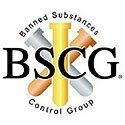
Banned Substances Control Group (BSCG): The Banned Substances Control Group (BSCG) assists responsible dietary supplement manufacturers that wish to assure their customers that their products do not contain dangerous banned substances. A product that bears the BSCG seal lets the customer know that the product has received BSCG Certification. Launched by UCLA’s Don Catlin in response to the WADA prohibition on accredited labs testing commercial samples, BSCG certifies particular batches of products, not the products in general. By participating in the BSCG program, each and every batch of a product is required to be analyzed and certified. Failure to meet this requirement results in immediate disqualification from the BSCG program.
After every batch of a product seeking BSCG Certification is made, the manufacturer is responsible for collecting a representative sample of the batch. The manufacturer then ships the sample of that batch to an accredited anti-doping research laboratory which has been designated by BSCG. The laboratory analyzes the sample for a series of substances that are banned by organizations such as the International Olympic Committee (IOC), the World Anti-Doping Agency (WADA), the United States Anti-Doping Agency (USADA), the National Collegiate Athletic Association (NCAA), the National Football League (NFL), and many other professional and amateur sports leagues. According the BSCG, their laboratory boasts CAP (College of American Pathologists) and CLIA (Clinical Laboratory Improvement Amendments) accreditations. These accreditations certify that the lab adheres to regulations pertaining to instrument maintenance, calibration, record keeping, and quality control procedures.
The laboratory analyzes the sample using a validated method with low detection limits (10 ppb for anabolic agents, 100 ppb for stimulants, the same as the informed-choice program). The laboratory reports to BSCG whether a substance on the list was found in the sample above the detection limits. If the laboratory reports to BSCG that no substances were found in the sample above the detection limit, BSCG issues a certification to the manufacturer for the batch from which the sample was taken. This certification enables the manufacturer to place the BSCG seal on the packaging of the products created from the same batch. A manufacturer may not market any product to consumers bearing the BSCG seal unless the batch from which the product was made has received certification from BSCG. The BSCG website does not list individual lot numbers that have been tested. Analysis is for 60+ substances on the WADA banned list, including all that are commonly found in dietary supplements.
In the event the laboratory finds that one or more banned substances were found in the sample, BSCG will immediately notify the manufacturer. The manufacturer will not be able to claim Certification nor use the BSCG seal on that batch or any other batch of the product still under the manufacturer’s control. The product will also not be eligible for future BSCG Certification, except in rare circumstances where the manufacturer can prove to the satisfaction of BSCG that sufficient affirmative steps have been taken to ensure its products are free of banned substances.
The cost to register for the program is $1750 per product, plus $400 per sample tested. Current triathlon-focus customers include: GENR8, Lyte N Go, and AminoVital and others listed on their website shows the product lines tested but no lot numbers. Consumers are required to look on bottle labels for the BSCG logo.
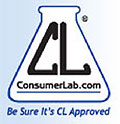
Consumerlab.com: This company’s Athletic Banned Substances Screening Program was started at the bequest of the United States Olympic Committee (USOC). At the time of the Salt Lake City games, the USOC wanted to have some supplements tested and no such program existed at that time. ConsumerLab worked with them in determining what of the WADA list could be tested and the various detection levels. While the detection level varies for different substances, the average is 10 ppm (note that this is 1000 times higher than the informed-choice and BSCG programs, meaning that 1000 times as much contaminant can exist in the sample prior to a positive test being announced).
Since 2002, this program has been present in the US and more recently in Japan. Products that pass are posted on ConsumerLab’s web site (http://www.consumerlab.com) and consumer e-newsletter, and the product’s company may issue a press release. They have also have conducted private testing for companies and organizations for which the results do not appear on their website.
The cost to test a single product is about $5000. The list of substances that are included in the screening is around 170, covering most of the WADA-prohibited list. ConsumerLab operates only on a secret-shopper basis, that is, the product to be tested is purchased from a retail outlet as a consumer would buy it. In this way, the manufacturer has no part in the testing process; however, there is no assurance that a reliable cross-section of production batches will be tested. A random sampling may not expose contamination issues in an untested batch. This testing program does not appear to work with manufacturers at any level and acts as a consumer watchdog over a wide range of issues outside the athletic testing arena.
ConsumerLab customers listed on their website include Astaxanthin (Fuji Health Sciences), Immunocal (Immunotec), HIRO Energy (Tahitian Noni) with test dates from Sept. 2005 to Nov. 2007.
Final Thoughts
Our ability to detect has outpaced our ability to comprehend. Let me repeat that: Our ability to detect has outpaced our ability to comprehend. Analytical instrumentation and techniques have recently evolved to detect minute quantities of a substance in a vast amount of bulk material.
For example, nandrolone testing in urine has a 7-9 part per billion (ppb) detection limit. What is 1 ppb? One part per billion denotes one part per 1,000,000,000 parts, one part in 109, or a value of 1 × 10–9. This is equivalent to 1 drop of water diluted into 250 chemical drums (50 m³), or one second of time in approximately 31.7 years. This is a very small amount to detect, and a material that contains 1 ppb of an impurity is unlikely to be a hazard. By way of comparison, the legal limit for lead contamination in candy is 100 ppb.
The 15th century alchemist Paracelsus once wrote „Alle Ding sind Gift, und nichts ohn Gift; allein die Dosis macht, daß ein Ding kein Gift ist“. Translated from German, it reads "All things are poison and nothing is without poison, only the dose permits something not to be poisonous". As critical thinkers, I encourage you to employ Paracelsus’ advice in your daily lives as we are bombarded with horror stories in the popular media.
So what is an athlete to do? Here are some suggestions:
– Encourage your national governing body (USAT, USCF, etc…) to support supplement testing programs that encourage manufacturers to test each batch produced, and provide athletes with a means to understand contamination of supplements
– Patronize products and manufacturers that partake in certification programs. Membership/certification is an expensive and voluntary effort, and in order to continue their efforts, manufacturers need encouragement to continue.
– Be aware of the differences between programs and certifications and their limitations. Just like the supplements they test, not all programs are created equal.
– Note that some testing programs do not necessarily analyze each and every lot produced. When in doubt, visit the testing website and seek confirmation that a particular batch has been tested.
– If you choose to take a supplement, ensure that what you take has been tested for contamination using appropriately validated testing methods in an accredited lab.
– Consume supplements that have been produced in a cGMP facility. This is your assurance that controls are in place to ensure the product you consume is exactly what is listed on the label, minimizing contamination and other handling and production issues. Manufacturers are typically proud of cGMP production and provide this information willingly on their website. Lack of this information tends to suggest a lack of cGMP compliance.
– WADA’s efforts are always evolving, with their prohibited list revised every year, and differences between prohibited lists of other drug-free sporting bodies that may differ from the list against which a supplement is tested. Be sure to read the small print and understand which list your sport follows.
—–
Jonathan Toker is an elite-level triathlete who hails from Canada and lives and lives in Southern California. He received a Ph.D. in organic chemistry from The Scripps Research Institute in 2001. Jonathan invented the SaltStick line of products back in 2002; you’ll find SaltStick dispensers in the bikes of most of the top long distance triathletes. SaltStick products are in progress to be registered with the Informed-Choice certification program.


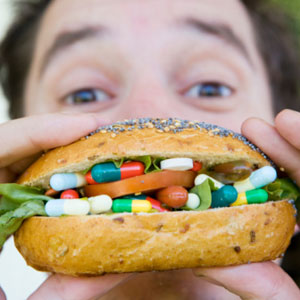
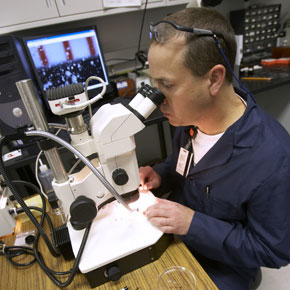
Start the discussion at forum.slowtwitch.com